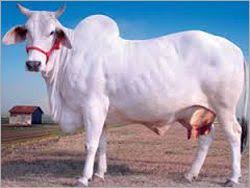Hypothermia in dairy animals and management
Dr.Parvinder Kaur Lubana,RDDL, Ludhiana
Hypothermia occurs when the body temperature drops well below normal. In general terms, with cattle, mild hypothermia occurs with a body temperature of 30°C–32°C, (86°F–89°F), moderate hypothermia at 22°F–29°C, (71°F–85°F) and severe hypothermia below 20°C (68°F). As rectal temperature drops below 28°C (82°F), cows are not able to return to normal temperature without assistance through warming and the administration of warm fluids. As hypothermia progresses, metabolic and physiological processes slow down, and blood is diverted from the extremities to protect the vital organs. Teats, ears and testes are prone to frostbite. In extremes, respiration and heart rate drop, animals lose consciousness and die.
If cows are not fed additional feed or the quality does not allow them to eat enough to meet their additional energy requirements, body mass will be “burned” to produce metabolic heat. These cows lose weight as both feed energy and stored fat are diverted to maintain body temperature and vital functions. Cows in this situation that start to lose weight soon enter a downward spiral — the more weight (fat) they lose, the less insulation they have, the more susceptible they are to further cold stress, and they lose weight even faster.
Cows, and especially heifers that lose weight, calve in poor condition. The consequences are increased calving difficulties, an increase in the number of lighter, weak calves and higher calf mortality. These dams produce a reduced amount of colostrum (of lower quality) and have lower milk production, increased neonatal mortality and reduced growth rate in surviving calves. These cows usually have delayed return to estrus, longer days open and poorer reproductive success.
Key management factors to limit the effects of cold stress
Monitor the weather. Monitor temperature and increase feeding in response to cold weather. Cows in the last trimester require additional grain feeding during periods when the effective temperature falls below the lower critical level.
Protect animals from the wind. Wind markedly reduces the effective temperature, increasing cold stress on animals.
Bed cows well. Providing adequate dry bedding makes a significant difference in the ability of cattle to withstand cold stress.
Keep cows clean and dry. Wet coats have greatly reduced insulating properties and make cows more susceptible to cold stress. Mud-caked coats also reduce the insulating properties of the hair.
Provide additional feed. Feed more hay and grain. If wet feeds are fed, make sure they are not frozen.
Provide water. Make sure cows have ample water available at all times. Limiting water will limit feed intake and make it more difficult for cows to meet their energy requirements. Frozen troughs and excessively cold water seriously limit water intake.
We can’t control the weather but we can do everything reasonably possible to reduce the effects of cold on cows. This will help reduce costs and improve production.



